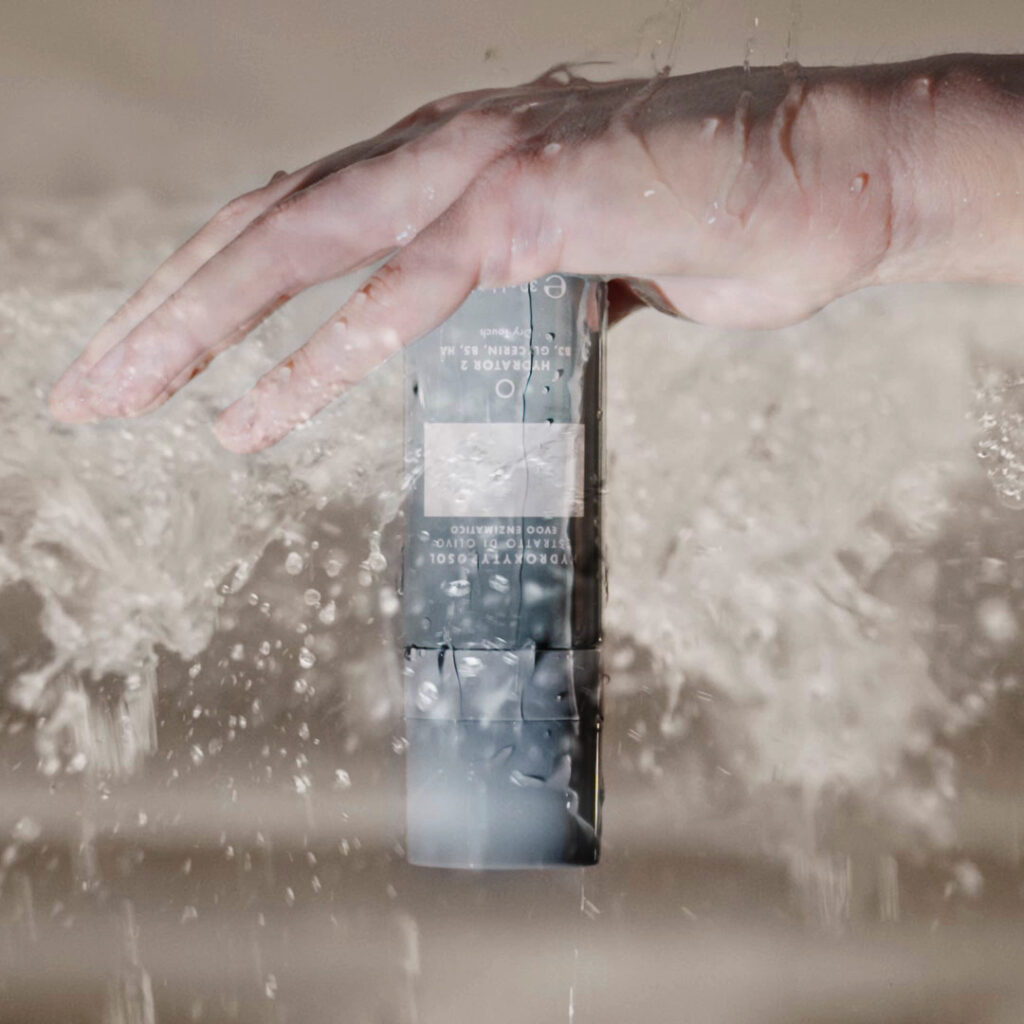Splashdance hydration for oily skin
Oily and combination skin types can be both oily and dehydrated. Yes, you heard correctly. Even for those who experience oily-dehydration, it can be confusing and frustrating.
Let’s cut to the chase and help you learn how to care for oily-dehydrated skin.

Making sense of technical words.
What’s the difference between dehydrated skin and dry skin?
- Dehydrated skin means your skin lacks water, not oil. The tell-tale signs of dehydration are skin tightness and visibly parched skin.
Typical causes of dehydration are sun damage, skin barrier damage, indoor heating, change in season, stress/lack of sleep, harsh/aggressive products.
Dehydration is a skin condition which means that it can happen to anyone. A skin condition describes what happens to the skin (acne is another example of a skin condition). - Dry skin on the other hand, means your skin lacks oil, not water. Typical signs of dryness are roughness, flaking/peeling/cracking, scaling.
Dryness is a skin type which means it is genetic and generally more permanent (the four commonly known skin types are dry, normal, combination, and oily).
To underline, dehydrated skin lacks water, not oil. So, this is how even oily or combination skin can also be dehydrated.
What’s the difference between moisturizers and hydrators?
- Moisturizers are generally formulated to hydrate (using actives called humectants; the most famous is Hyaluronic Acid) and retain hydration (using occlusives), often with the added benefit of comforting the skin from dryness and sensations of irritation (using actives called emollients, famous ones are Shea Butter and Panthenol).
To help retain hydration and give comfort, moisturizers often use occlusives which act as a physical or protective barrier. This barrier helps to keep irritants and bacteria/toxins out while locking hydration in. Commonly used occlusives are silicones, oils, and petrolatum.
And herein lies the issue for oily-dehydrated skin – many moisturizers are formulated for dry and normal skin (recall, dryness lacks oil) and so they are often rich in occlusives and emollients – not always so great for oily-dehydrated skin (recall dehydration lacks water, not oil). Unless explicitly specified, it is difficult to know by ingredients alone if a moisturizer is hydrating enough or too rich for oily-dehydrated skin. And as many oily and oily-dehydrated skin users know, finding these types of products are more difficult than you think.
However, the recent rise of Hydrators may be just the formulaic solution for oily-dehydrated skin.
- Hydrators and hydrating serums are a growing category of products formulated to attract and increase hydration. They are different from moisturizers in that they contain minimal, or no emollients or occlusives.
Hydrators offer oily-dehydrated users much needed hydration typically in an ultra-lightweight texture lotion or gel which absorbs quickly without any residual greasy barrier covering the skin.
Along with Hyaluronic Acid, look for other great humectants which attract water like Glycerin, B5 (Panthenol), Propanediol, TMG (Betaine), and Pentylene Glycol.
Hydrator 2 is a fast absorbing, ultra-lightweight lotion designed to specifically hydrate oily and combination skin. Inside you will find a blend of four hydrators and light moisturizers carefully formulated to optimally attract and retain water without a trace of grease – leaving you feeling fresh for Spring and Summer.
- Glycerin. Attracts water in the superficial layers of epidermis, helping to maintain a soft and smooth skin.
- B5 (Panthenol). Acts as a moisturizer attracting and helping maintain water in place. It improves epidermis hydration, maintaining skin softness and elasticity.
- Hydrolyzed Hyaluronic Acid. A low-molecular weight Hyaluronic Acid able to bind and retain a high number of water molecules.
- B3 (Niacinamide). Helps to retain moisture and rebalance excess sebum, improving skin texture.
Use daily, morning and night, to hydrate oily and combination skin.
// Related //

Raffaella Solcia, a spritz with the Italian makeup artist

Raffaella Solcia, an espresso with the Italian makeup artist

Post-summer skin makeover. Best routines to get your luminosity back.
